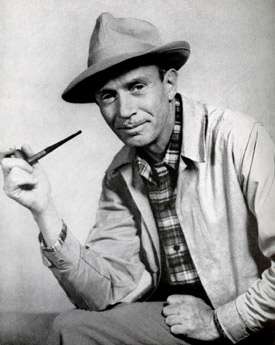
If you were born in the 1940s or earlier, you can probably remember the time when trout were the premier gamefish in American waters. And if you believed the outdoor writers of the first half of the last century, you know that trout were regal, noble and “clean” fish whereas bass were somehow “dirty” because the streams and lakes from which they were caught were not as pristine, and the anglers who chased after them were somehow not as well-heeled.
All that began to change in 1946 when Ted Kesting, editorial director of Sports Afield magazine, hired a man named Jason Lucas to become the periodical’s fishing editor.
Back then, the fishing editor of one of the “Big Three” outdoors magazines (Field & Stream and Outdoor Life were the others) had a bully pulpit. Writers like Ted Trueblood (longtime fishing editor of Field & Stream and a contemporary of Lucas) championed the trout and fly fishing. Lucas was different. Despite the fact that he had been born in Yorkshire, England, he was a bass fisherman.
But before Lucas ever began to write about fishing, he tried his hand at fiction, penning six western novels under the name Jay Lucas. 7 Bar 7 Ranch (1934), Blaze McGee (1935), The Arizonan (1937), Boss of Rafter C (1937) and Desert Ranger (1939) never caught on with larger audiences. His final western novel, The Gun Fighter (1950) was published in London after Lucas was well established on the American fishing scene.
Kesting first learned of Lucas because of his angling legend. Word had it that Lucas was catching daily limits of bass from lakes just a few miles from New York City — lakes “which everyone knew had been fished out years ago,” according to Kesting.
Eventually Kesting read an article on bass fishing that Lucas had written and was amazed by its quality.
“This man really knew something about fishing,” Kesting wrote in the introduction to the first edition of Lucas on Bass Fishing. “The article had none of the old hackneyed dope that had been published in every outdoor magazine for the past fifty years. The information was new and came from first-hand experience.”
When Kesting asked Lucas to write a six-part series on his bass angling techniques, he published them to wide acclaim, saying “The response from readers was immediate. They had been starving for fresh information on bass fishing for years, and mail poured in daily demanding more. I invited Lucas to become angling editor for Sports Afield.”
Finally there was a bass fisherman at the helm of the angling desk at one of the Big Three. It was a pivotal moment in the history of our sport. While the angling editors of Field & Stream and Outdoor Life continued to espouse the value of trout, Lucas was passionate about bass fishing.
In fact, he was so passionate about bass fishing that he once fished eight hours a day for 365 consecutive days. Kesting credited him with offering up the best excuse for spending so much time on the water: Lucas claimed he worked out the plots for his stories while bass fishing.
Not coincidentally, Sports Afield prospered during Lucas’ tenure. It quickly became the most popular of the outdoor magazines.

But Lucas made other contributions to the world of bass literature outside of Sports Afield. In 1947, he published Lucas on Bass Fishing, a must-read of that era and one of the rare practical how-to books on the subject of bass fishing published to that time. It would be revised and reprinted two times, in 1949 and 1962.
The author was matter-of-fact in his prose and determined that his book would be of practical value to its readers. In his introduction he wrote, “I might add that whatever faults this book may have — and I know there will be many — no armchair theories will be found in it, for I have subjected all methods and theories which I mention to the most exacting tests, in much actual fishing, and find that they really lead to catching many bass.”
Lucas was practical in his approach to covering the sport. Whereas his predecessors and other contemporaries lauded trout in purple prose, he was matter of fact and taught with his work. His style was often blunt and far from politically or socially correct. The monthly column in which he answered reader questions quickly became one of the most popular sections of the magazine. Once, when asked by a reader what he thought of taking one’s wife fishing, Lucas replied (in print!), “I suppose you could have her row the boat if you could train one thus.”
In his lengthy career as a writer and angler, Lucas spread the gospel of bass fishing to a nation starving for information. After James Alexander Henshall, he is the most important journalist in the history of our sport and deserves much credit for the surge in popularity of bass fishing before Ray Scott founded B.A.S.S.
In a passage that describes his passion and career, Lucas wrote, “I am still learning about fishing, and I hope to continue doing so as long as I live. I am always trying to disprove my own most strongly held theories, to find better ones; and when I do, the old ones promptly are thrown out the window. If that sad day should ever come when I think that I know all of it and have no more to learn, I trust that I may have intelligence enough to disappear quietly from the pages of sportsmen’s publications.”
Ultimately, Lucas didn’t leave Sports Afield because he had no more to learn or teach, but due to philosophical differences. He objected to the magazine’s running advertisements for gear he considered “junk,” so he quit in 1968.
Jason Lucas retired to British Columbia, Canada, and died there in 1975 at the age of 78.

